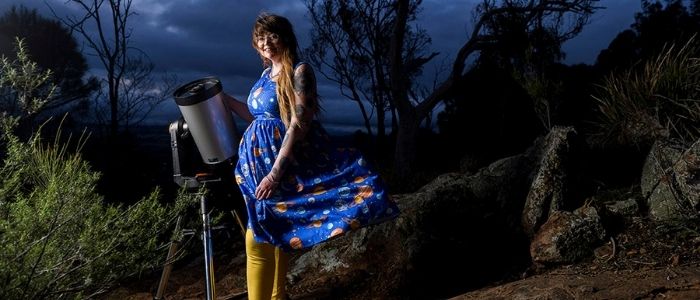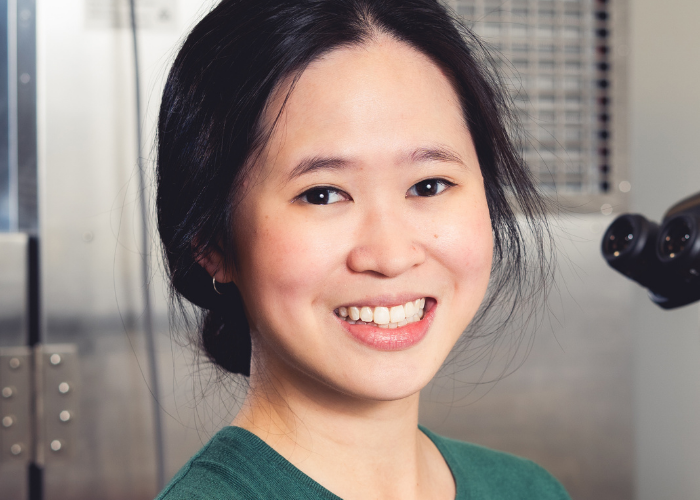Diversity and inclusion are core pillars of the Australian Academy of Science’s vision for a scientifically informed Australian community that embraces excellence in science. A community that is guided by, and enjoys the benefits of, scientific endeavour.
The Academy recognises that diversity is critical to excellence in science and that an inclusive STEM community brings together the widest range of talents, backgrounds, perspectives and experiences, maximising scientific innovation and creativity, as well as the competitiveness of Australia and its scientific industries.
As part of International Day of Women and Girls in Science, the Academy is profiling several outstanding women within STEM, and considering the systemic challenges women experience throughout society and the workforce.
Each of our colleagues addresses key questions below.
What drew you into the world of STEM?
Karlie Noon says:
“As a kid, I was pretty obsessed with the natural world and found it beautiful. It wasn’t until I was 19 after reading A Brief History of Time by Stephen Hawking that I even knew what physics was. Up until this stage, I had a pretty strong handle on maths and became obsessed with learning about the universe, so figured I may as well have a go at doing a degree in it. I never thought much more about it, I was just really curious about how everything came to be.

[Karlie Noon Image credit Rhett Wyman, Sydney Morning Herald]
“Attracting women and girls to STEM and providing an environment for them to thrive is a shared responsibility of government, academia, the education system, industry and the community. The attract–retain–progress framework outlined in the Women in STEM Decadal Plan provides a useful approach to understanding the issues and challenges faced by women and girls in STEM.
“While the impacts of COVID-19 disrupted the careers of early-and mid-career researchers (EMCRs), it has particularly negatively impacted women in the STEM workforce. Women remain an under-represented group in STEM and have been disproportionately impacted by disparities in the distribution of domestic workloads, and have had fewer career opportunities compared to men, hindering their career progression. More than ever the attract–retain–progress framework is critical to overcoming systemic challenges faced by women in STEM.”
Who are some of your role models?
Dr Tich-Lam Nguyen responded:
“I have learnt a little bit from many women whom I’ve had the opportunity to work with and know of. I learnt resilience and the value of education from my mum. She couldn’t complete high school due to the war and had always encouraged us to never waste an opportunity to learn. Angela Merkel and Jacinda Ardern are also my role models although I’ve never had the privilege to meet them. Angela Merkel has truly shown what a difference a leader with STEM backgrounds can make. She’s positioned Germany as a leader in energy reform and her influence has spread even outside of the EU. Jacinda Ardern showed how empathy, kindness and a forward focus can lead a country through times of crisis.

Image of Tich-Lam Nguyen
“There is overwhelming evidence that women face systemic challenges in the workforce in STEM and beyond, which negatively impacts their engagement, experiences and opportunities for career progression. Factors such as biased employment practices, lack of workplace flexibility, a concentration of women in industries that have lower than average incomes, and the propensity for women to have more time out of the workforce, all contribute to the pay gap where women earn less than men by 14.2%.”
What advice you would give women and girls considering a career in STEM?
Former EMCR Forum Chair Dr Yee Lian Chew said:
“The major challenge for me was having faith in myself that I could keep going and that I wasn’t going to be a complete failure (imposter syndrome, anyone?). It definitely helps to have friends and allies who lift you up when you feel down. If you love science and technology, and you want to pursue it as a career, don’t let the haters keep you down. Find your people and keep on lifting each other up.

Yee Lian Chew Image credit Jonathan Barge from the Flinders Foundation
“Organisations wanting to support the development and increased participation of women in STEM should adopt an evidence-based approach, which is intersectional and centres the voices and experiences of individuals, as part of all their efforts. While there are various initiatives employers and peak bodies can adopt, without an evidence-based approach that is intersectional and consultative, it may prove difficult to measure the long-term success of initiatives, resulting in less meaningful workforce engagement and diminished lasting change.”

Nabilah Chowdury from the National Youth Science Forum (above) also had this message for women and girls in STEM:
“Don’t be disheartened; give it a shot and see what you think. You may be nervous about entering a male-dominated sector, but don’t be discouraged. I really believe that you do not need to be the best student or the smartest person in the room to embark on a career in STEM. Dream big and put in the effort. There are no limits to what you can do if you do so.”
Check out the Australian Academy of Science here.
